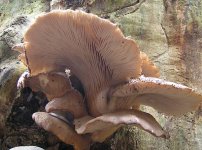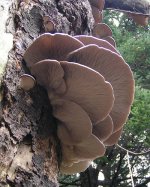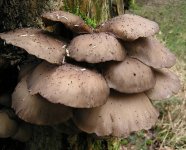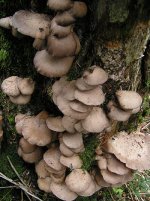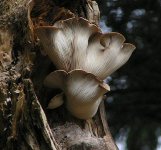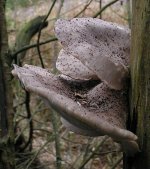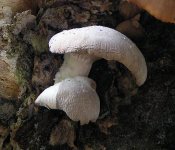psilo said:
Actually after looking at lots of different photos of Pleurotus ostreatus it seems that it has quite alot of different colour variations. I have seen this in many fungi. So my question is this. How do you recognise any species that you know as one colour when you see it as another? Many books only give a pretty much standard guide to their colour so how do you know when you have a slight variant? (sorry I hope that you understand what I mean?) also what causes variations in cap colours?
You see why I described them as "a bit confusing"!
Yes, colour variation is tricky, when books don't mention it.
There was a Porcelain Fungus (
Oudemansiella mucida) photo posted the other day, the nice, typical, white version, the only version that British books mention.
But it's also available in dark brown - quite a shock when one sees it!
Russulas are the worst, especially when popular guides (as one recently did) give no colour information at all and readers are left to assume that the species is always the colour in the picture, when many species can vary from yellow to red to purple or even green.
(Guide to mycologists by the way:
Beginner - cannot name most
Russula species in the field
Advanced - confidently names many
Russula species in the field
Real expert - knows most
Russula species
cannot be named reliably in the field!)
As for what causes the variation - genetics.

Alan




